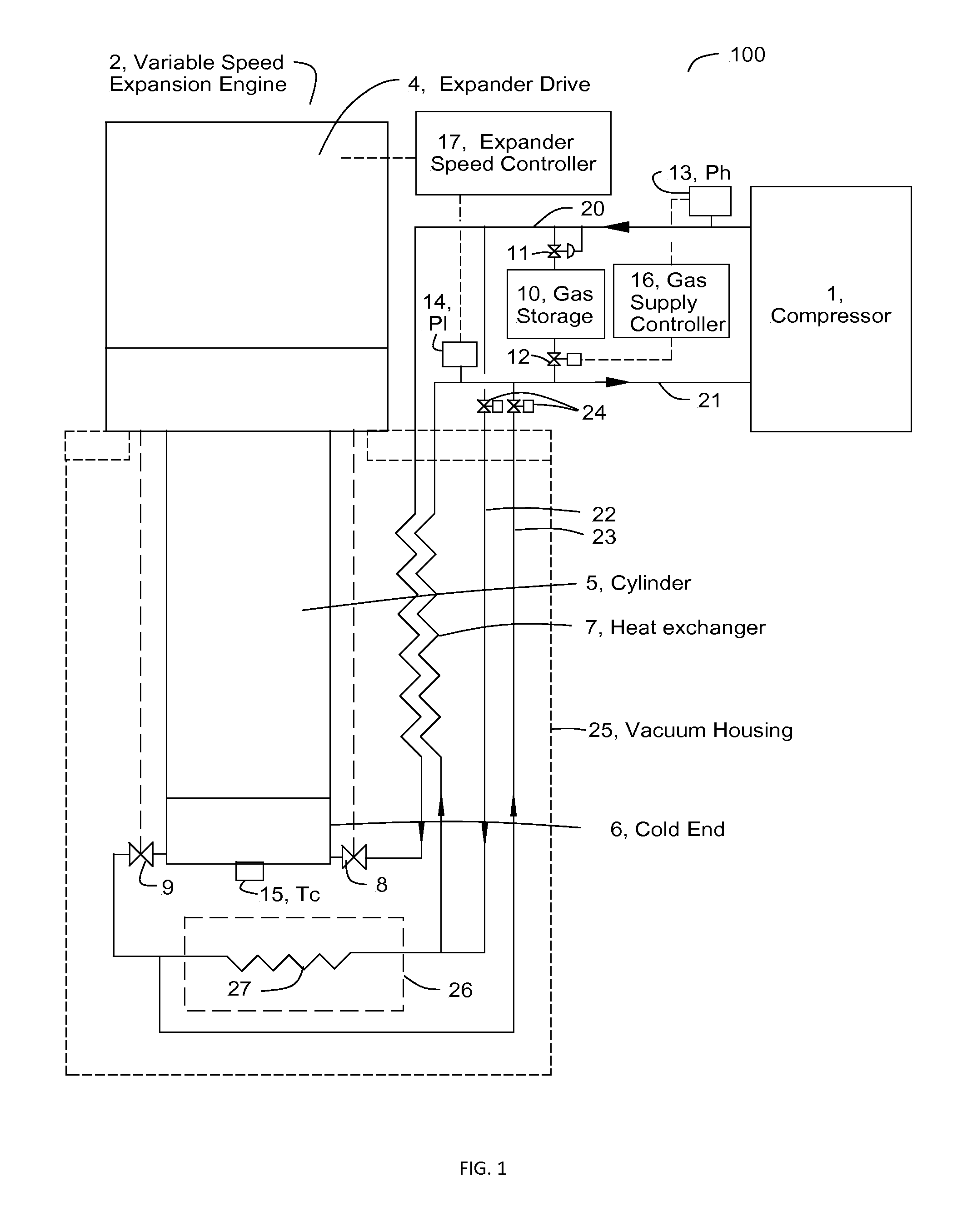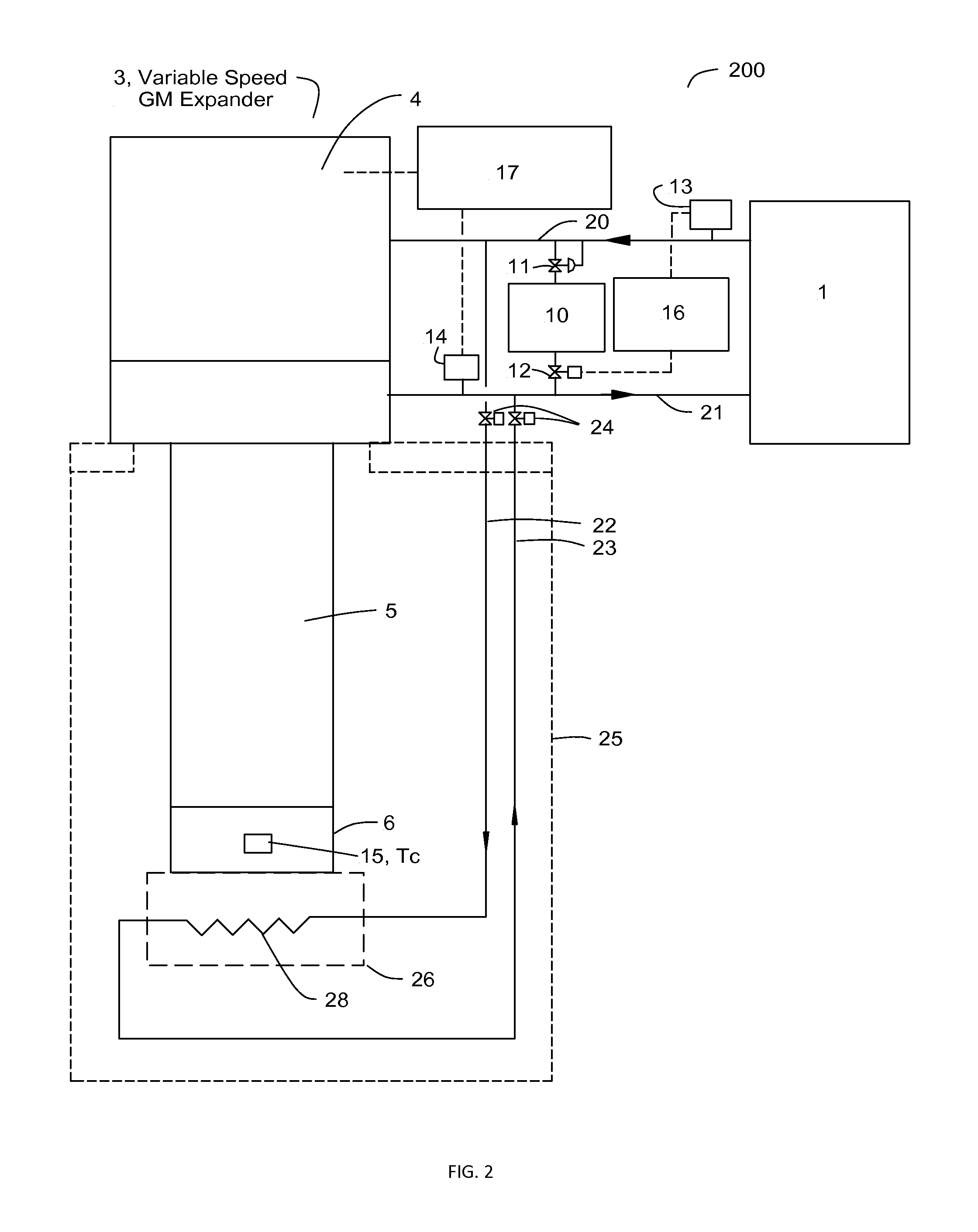Fast Cool Down Cryogenic Refrigerator
a cryogenic refrigerator and fast cooling technology, applied in the field of fast cooling down cryogenic refrigerators, can solve the problem of limiting the range over which the speed can be varied without incurring significant losses, and achieve the effect of maximizing the refrigeration rate and constant supply pressure at the compressor
- Summary
- Abstract
- Description
- Claims
- Application Information
AI Technical Summary
Benefits of technology
Problems solved by technology
Method used
Image
Examples
Embodiment Construction
[0015]The embodiments of this invention that are shown in FIGS. 1, 2 and 3 use the same number and the same diagrammatic representation to identify equivalent parts.
[0016]For a system that operates on a Carnot cycle, no losses, the ideal refrigeration rate, Q, is equal to the power input, Pwr, by the relation
Q=Pwr*(Tc / (Ta−Tc))
where Ta is ambient temperature and Tc is the cold temperature at which the refrigeration is available. For a Brayton cycle system in which the gas is compressed and expanded adiabatically the relation is
Q=Pwr*(Tc / Ta)
[0017]From this it is seen that Q is maximized by operating the compressor at it the maximum power input that it is designed to handle. This is done by maintaining the high and low pressures, Ph and Pl, at constant values that maximize the input power. The mass flow rate from the compressor is constant. Most of this gas flows in and out of the expansion space, which is usually a fixed volume, thus as the expander cools down and the gas becomes dens...
PUM
 Login to View More
Login to View More Abstract
Description
Claims
Application Information
 Login to View More
Login to View More - R&D
- Intellectual Property
- Life Sciences
- Materials
- Tech Scout
- Unparalleled Data Quality
- Higher Quality Content
- 60% Fewer Hallucinations
Browse by: Latest US Patents, China's latest patents, Technical Efficacy Thesaurus, Application Domain, Technology Topic, Popular Technical Reports.
© 2025 PatSnap. All rights reserved.Legal|Privacy policy|Modern Slavery Act Transparency Statement|Sitemap|About US| Contact US: help@patsnap.com



